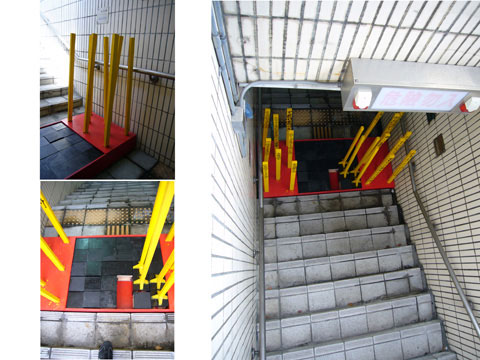 |
||||||
|
The ghosting series began with two year-long projects completed in 1994 and 1995. I began the work with a dissatisfaction in what is seen as the limits of the mapping process -- its focus on formal traces either as ruins or reconstructions. I wanted to capture the intangible aspects of a site and use them to inform the process of design. This work sought to map the intangible, that which gives meaning to the spaces, objects and events that we design. The “ghosting” projects include my own work and research done with students. This path of inquiry is relevant to a discussion of feminist practices from several points of view: architecture as a collection of practices engaged with building meaningful and extraordinarily multidimensional spatial experiences, not merely isolated formal maneuvers; architecture as a cultural practice that crosses disciplinary boundaries in order to devote itself to a broad public audience; the adaptation of cartography as a means of design inquiry in order to inform the design process and open it up to discoveries that often eclipse the imagination of traditional authorship. A series of workshops with students, led by another collaborator, Scott Oliver, and I extended this research. Engagement with the World Heritage List (WHL) began as an approach to mapping the forces of gravity, weathering and the passing of time through temporary structural “fixes” to heritage sites. The idea was to manifest these forces in situations where conservation or preservation had either erased their marks or dulled their effect. The students participating in the workshops were fascinated by the potential of these small architectural interventions to bring meaning to material culture, in particular, by bringing attention to aspects that were no longer clearly perceptible. In 2004 this line of research intersected with UNESCO’s recognizing a dilemma inherent in the WHL – that, in many instances, what made a site “of universal value” was often missing – either lost before or via inscription, since preservation often transforms living sites into heritage artifacts. The Convention on Intangible Heritage adopted by UNESCO broadly addresses this as “intangible heritage.” The most recent workshop with students, Ghost Fishing, takes on the new convention’s aim of preserving cultural rituals. The question of the International Workshop “Ghosting: Talismatic Architecture” (organized by Thomas Tilluca Han of Shih Chien University) is the relevancy and transmission of Taiwan’s Ghost Week to new generations. Our group took on the cumulating event of the workshop – a parade from the school to a local riverside park—as a site for our intervention. The students analyzed the route of the parade and made a typological study of ghosts dwelling along the route through mapping spatial conditions identified as “ghost space.” They then designed customized houses to temporarily accommodate each type of ghost as the parade passed by. Ghost teams |
 |
||||||
|